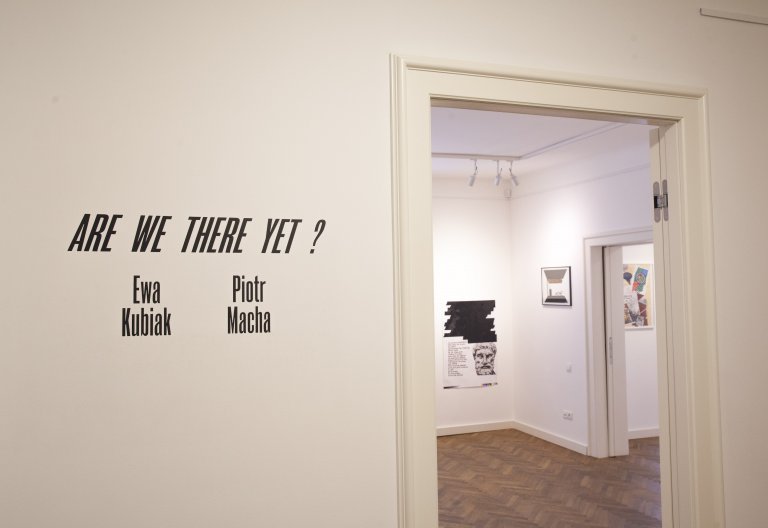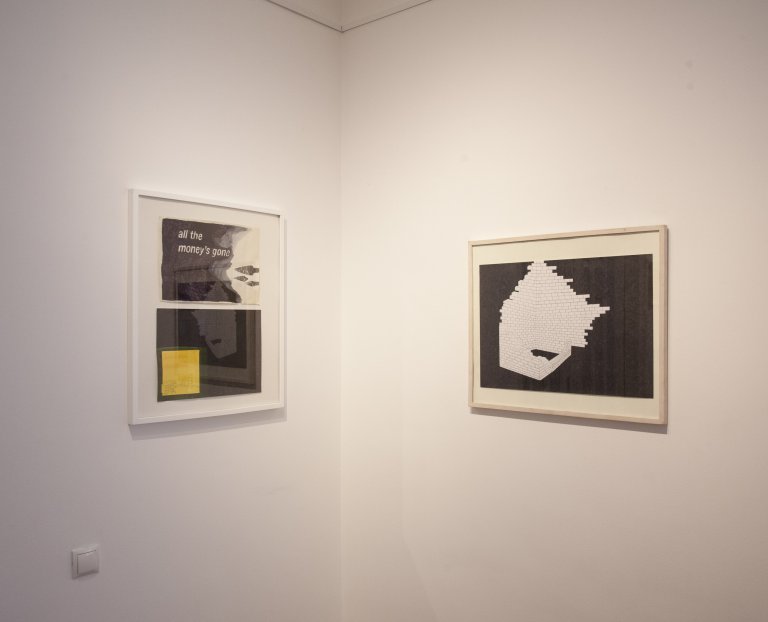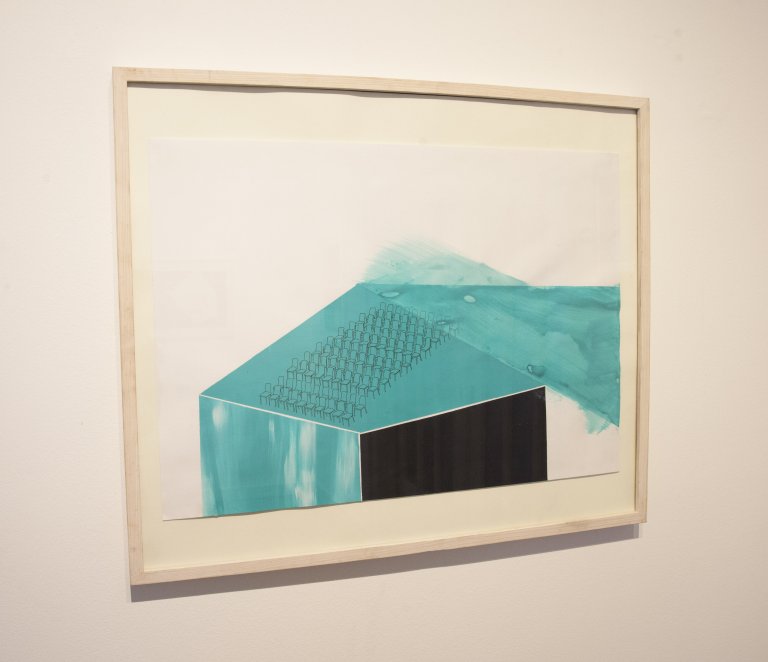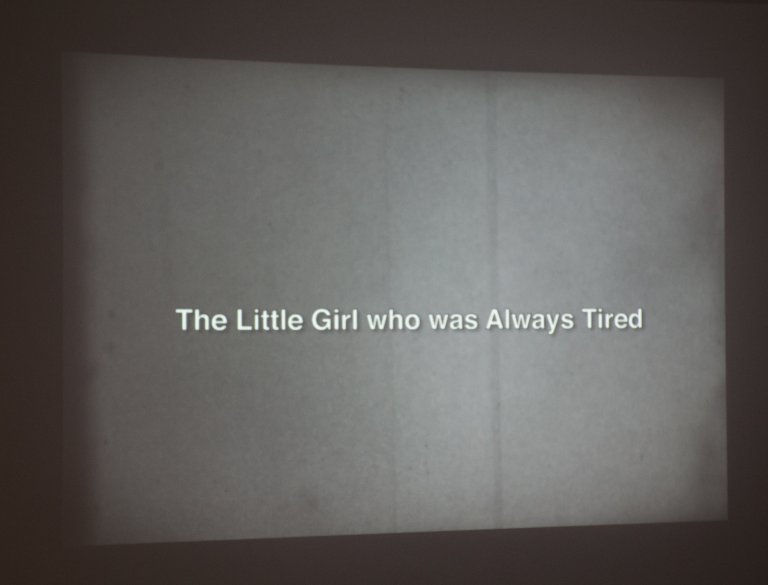ARE WE THERE YET?
Ewa Kubiak
Piotr Macha
21.03.2018 — 10.05.2018

About artist
The Ewa Kubiak and Piotr Macha’s exhibition examines affiliations and divergences between artists who constitute a duet both in life and in art. A somewhat seamy poster depicting a woman and a man at a scrap yard where each of them looks the other side, lets us doubt however the status of their declaration, or at least take a tongue-in-cheek approach to it, waiving the definite border between a starting and a finishing point. It also seems obvious that their meeting at some point of their lives and the resulting consequences thereof upon art in this very case were defined by retaining an intricate nature of individuality.
The ambience of the presented threads concerning personal relation of the two protagonists is aired via film conventions and themes, performed by them through the medium of video and drawing. The scope of the shared interests of Kubiak and Macha is completed with a discernible in their works inclination towards the text what additionally raises the stake of the game played with the audience. It concerns not only the issue of the diffused authorship, conscious or subconscious borrowings but maybe most of all it is about blurring the borders between the reality and fiction.
What apparently becomes the leading thread is the road movie convention signalled in the question posed in the title of the exhibition, that is entangling beginning with the end. As a result of adopting the cinematographic principle of the convention as the leading idea of the exhibition, among the presented there works, a network of inter-textual references is created where the premises resulting from individual biographies entwining each other pale into the background against the biography understood as a fascinating construct, reaching beyond the factographic concept of the authorship. Additionally, Macha and Kubiak show that, with certain exceptions in the form of for example Gilbert & George duet consciously performing unattainable in life concept of unity between partners, it is rather difficult to assume that artists will exhibit biographies of prevailing blissful and creative life.
Kubiak and Macha direct an exhibition situation in which potential mutual influences and differences between artists assume the forms of projection screens intentionally illegible for the audience. Watching the drawings in the relation to the video and vice versa we have an impression that the issue of exchanging competencies appearing along with common life experience undergoes a similar process of becoming film like. Although it is not a secret that Kubiak has acquired from Macha the filming technique on the 8mm film and that the sensitivity of Macha to the text as an element of visual art has greatly developed thanks to Kubiak who is also an author of prose, the way the artists mark the issue of intellectual property as well as their refusal to become secondary, excludes the literal fight or publicized antagonism that frequently appears among artist when something goes foul. Their attitude manifested within the common position favouring the staging of dialogues among media included in the exhibition, maintains the illusion and builds the suspense and does not focus on war but on lust that does not necessarily exclude it. The perception of relationship reality created by them resound with żiżkov cinematographic theory as the art of appearances, deception but also fulfilling desires. Following that lead we notice that this reality turns out, just like cinema, a mysterious realm, dreamlike point where there is place for darkness and smoothness – a rather unfinished project than a ready product.
The exhibition falls into a recent trend of becoming interested in the issue of relations between artists (eg. Zofia Krawiec, Miłosny performans, 2016 or Łukasz Ronduda, Serce miłości, 2017). Eluding at the same time the perspective of becoming a biography or a film par excellence, it offers the effect deferring the conditions of stripping the artists from their private sphere and what often follows – primitive possession of their worlds.
Ewelina Jarosz























